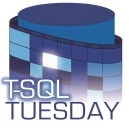Loving reading
Connecting to SQL Server on macOS from Windows VM
It's ok to start small
Getting clarity from calendar events in a packed PM schedule
Using Python and Azure Functions to send data from Azure SQL Database
Episode V: Bluehost Stikes Back
OMSCS Research Options
The Georgia Tech online masters of science in computer science has been a groundbreaking endeavour to bring an MS CS program to students at a massive scale.
In five years, the program has received over 25,000 applications and enrolled more than 10,000 students (including those who have graduated), all working their way toward the same Georgia Tech M.S. in Computer Science as their on-campus counterparts.
Despite the use of online communities, legions of teaching assistants, and other techniques to expand the reach of a traditional masters of science program to thousands of students, there are still opportunities for students to be deeply engaged with university resources. One of these categories of opportunities is research and independent projects, which I was fortunate to experience in three ways during my time in the program.
OMCS Graduation and Recap
The online Masters of Computer Science program at Georgia Tech is completely online and designed for working, part-time students. I applied to OMSCS in 2015 when I was concerned about what I saw as a plateau ahead in my career. At the time I worked for a smaller company doing a little bit of everything in technology and development. With a MS in chemistry and a minor in computer science under my belt I was confident that I would be able to succeed in OMSCS and it would contribute to my part of my aspiration to be a better developer and work as software engineer in the future.
I received the decision notification email while driving from Missouri back home to Minnesota. It was unpleasantly cold and windy at a gas station in Iowa as I navigated the applicant portal from my iPhone. Also relatively unpleasant was the news that I had not been accepted to OMSCS.
Episode IV: A New Host
Content prior to this date is migrated from the previous Wordpress site. I’ll be cleaning it up over time and apologize for formatting issues that impact the reading experience.
T-SQL Tuesday #130

My invitation to you is I want to know what you have automated to make your life easier? This can be anything creating a SQL Server Agent job to automated running a daily report or using dbatools to manage your servers. I’m curious what challenges you’ve found at your job and what you’ve done to make things better. If you haven’t had a chance to automate some part of your job, what would you like to automate and what are your hurdles? If you’re interested in some help or advice, let us know. I love #SqlFamily, and I’d love to see what we can do to help out.
T-SQL Tuesday Host, Elizabeth Noble (https://sqlzelda.wordpress.com/2020/09/01/t-sql-tuesday-130-automate-your-stress-away/)
Monitoring Temperature with Home Assistant
As I embark on my first year with a greenhouse, one of the fundamentals I want to grasp is an understanding of the temperature and humidity inside the greenhouse and how it is impacted by the weather outside the greenhouse. Our whole-house “smart system” is centralized through Home Assistant so I wanted to continue the connection into the greenhouse by passing the monitoring from the greenhouse through Home Assistant. This post is the basics of how I accomplish this.
Management Reporter Error: GLTrans with transdate value far outside a normal range.
Consuming a Webhook with Azure Logic Apps
In the world of technology services, integrations are the gold standard. Azure Logic Apps are an accessible and customizable way to create basic integrations. One of the most common integration options you will see is a “webhook” – when a system sends defined HTTP requests to a user-defined endpoint.
This post summarizes an example where when a visitor logs in at an Envoy kiosk, the integration sends an SMS and an automated phone call to their host through Plivo. Azure Logic Apps can be used to quickly create an endpoint for receiving webhooks without writing code.
The Open Source Opportunity: How You Can Impact Azure Data Studio
This post recaps a webinar originally presented during the 24 hours of PASS marathon in September 2019, “The Open Source Opportunity: How You Can Impact Azure Data Studio”. The webinar was a precursor to a presentation on Azure Data Studio extension development at PASS Summit 2019. It was a new challenge to present at 3am local time but I’ll (almost) never forgo an opportunity to talk about contributing to open source software.
Open source software presents a unique opportunity to shape the future of a product with modes of involvement for any skillset or interest. Azure Data Studio, a cross-platform product with monthly releases, has a steadily growing pool of contributors from across the data platform community. From reporting bugs to submitting source code pull requests, we’ll review the ways anyone can impact the development Azure Data Studio.
https://www.pass.org/Learn/Recordings/Listing.aspx?oRecording=3396